Nyborg,Denmark 作者: 来源: 发布时间:2021-09-29
一、人口,面积,所属地区
Population: 32,009
Area: 276 km²
Municipality in Syddanmark
二、自然地理
Nyborg municipality is a municipality in Region of Southern Denmark on the east coast of the island of Funen in central Denmark. The municipality, including the island of Sprogø, covers an area of 276 km². Nyborg Municipality is an attractive municipality in the heart of Denmark, with nice commercial streets and with several historical and cultural attractions. The municipality shares a municipal boundary with the following municipalities: Faaborg-Midtfyn Municipality, Kerteminde Municipality, Odense Municipality, Svendborg Municipality. The main town and the site of its municipal council is the city of Nyborg.
The island of Sprogø lies in the Great Belt ca. 8.5 kilometers from the shores of the town of Nyborg. The Great Belt Bridge connects the municipality to the island, and then it continues to the island of Zealand at the town of Korsør.
Holckenhavn Fjord cuts into the municipality on its eastern shore north of the town of Holckenhavn. A road (Svendborgvej) connects the municipality across the fjord.
Nyborg is located in Nyborg Municipality on the island of Funen. Nyborg is one of the 14 large municipalities created on 1 January 2007.
In Nyborg Municipality there are 154 hectares of municipal owned forest. The forest area is divided into 11 smaller forests. In several of the forests there are marked hiking trails and in Teglværksforoven in cooperation with Nyborg Cykle Klub a mountain bike trail of approx. 2.4 km. At the same time, the areas of untouched forest and biodiversity forest are classified as still areas, ie. areas that should, as far as possible, be kept free of activities.
There are approx. 170 km of public watercourses. In addition, a large number of private watercourses, ditches and sinks. The streams are all covered by the Streams Act.
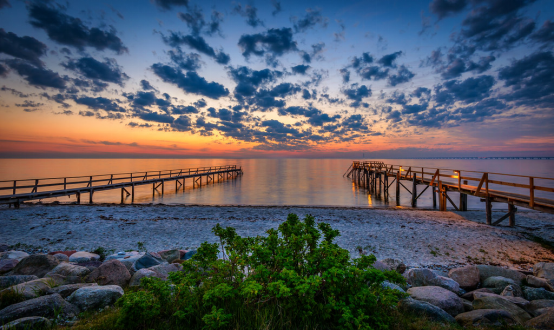
Transport
Nyborg has a central location with direct access to the motorway, railway and deep water port.
In Nyborg Municipality, FYNBUS performs public service traffic in the form of, for example, city bus and teletaxis. FYN BUS manages bus traffic, manages daily operations and sets tariffs. The tariffs apply to all of Funen for both regional and local routes. The Nyborg City Council sets the level of service for local traffic.
The municipality and NFS have bought five electric cars with support from the Danish Energy Agency, so that together with other municipalities and utilities, they can investigate whether the electric cars are ripe for daily transport - also in the public area.
三、经济发展和规模
The municipality is a diverse workplace with about 2,500 employees. These are engineers, academics, economists, social assistants, social workers, educators, clerks, and many others. The possibilities are endless and the work is meaningful - you work for the citizens and users of Nyborg Municipality.
In Nyborg Municipality, residents earn an average of DKK 298,288 before tax. The national average is DKK 325,892, a difference of DKK -27,604. On average, each citizen has DKK 215,483 available after the tax has been paid.
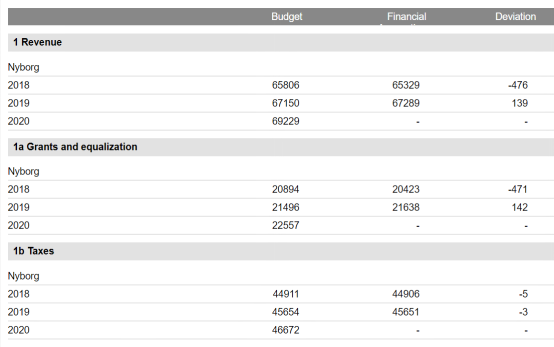
*All amounts are in DKK per. per capita in current prices.
四、产业特点重点项目
Nyborg’s location at the heart of the kingdom has made the town an obvious hub of political and, military endeavours and transport links. This has shaped the history of the town and explains why it plays such a central role in the history of Denmark. Today, thanks to its central location, Nyborg is a progressive town with an active and flourishing business community.
Nyborg’s central location has encouraged many companies to settle here. There is close, committed cooperation between the municipality and the business community, with shared visions and goals for the development of a strong municipality for business, and there are excellent opportunities for new businesses to become part of the narrative of a municipality and a business community very much in growth mode.
Nyborg’s businesses are particularly strong in the foodstuffs, environmental services, chemical and plastics industries. Nyborg’s central location makes it the obvious choice of location for businesses and homes. There is direct access to infrastructure, including the motorway network, rail connections and a deep-water port, so highly-qualified professionals have easy access to Nyborg. Businesses also have access to state-of-the-art, fast and reliable IT connections.
The followings are the industries that have the most employees:
1. Social institutions (1,979 employees)
2. Trade (1,366 employees)
3. Education (1,008 employees)
4. Hotels and restaurants (926 employees)
5. Construction (803 employees)
五、风景名胜,景点
Østerø Sø
Address: Fyrvej 1, 5800 Nyborg
The Knudshoved peninsula is formed from sand and gravel, eroded from the coast north of Nyborg and carried southwards with the current, where the material was deposited to form a peninsula. The Østerø Sø lake area is a Natura 2000 (a European nature conservation and projection project).
The lake and surrounding salt meadows are an importang breeding ground and forage territory for many ducks and wading birds. The waterholes in the salt meadows also provide habitats for amphibians such as the natterjack toad, the agile frog and the moor frog.
A nature path leads from the car park to the bird watching tower by Østerø Sø lake, so you can walk there without disturbing the birds. In the tower there are posters showing the birds you are most likely to see.
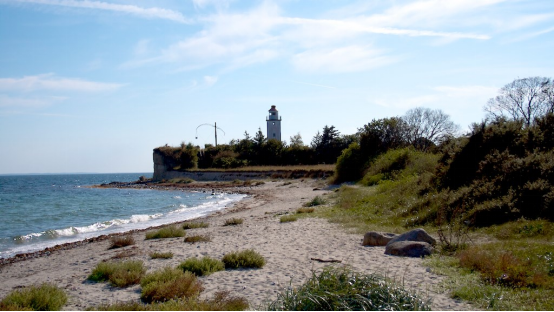
1 The Church
Address: Adelgade, 5800 Nyborg
Nyborg’s Church of Our Lady was built by Margrete I (1376–1412) in 1389. According to a priest’s account from the 1630s, it was built to mark the military victory over the Swedish king, Albrecht of Mecklenburg, which made it possible to unite the three Nordic kingdoms in the Kalmar Union. Some ten years earlier in 1377, she had united Denmark and Norway under her authority for her son Oluf at the Danehof at Nyborg Castle.
The two crucial events that led to the formation of the largest kingdom in Europe, geographically speaking, are thus connected to the history of the town, the church and the castle. It is possible that the church had a predecessor, which Margrete extended, but whatever the case, it is the only monument we have in Denmark directly related to the establishment of the Kalmar Union. The building was completed in 1428, when Bishop Nafne inaugurated “the nave of the holy house”.
The church is a gothic building with three naves closed off to the east. The interior shows clear deviation between the two sections mentioned above – particularly with regard to the arcade pillars with their different details. The present church, however, is the result of a resto
ration at the end of the 19th century. Prior to this alteration the church had virtually five naves, since there were both on the north and south sides a number of chapels, which in the course of time had been joined and thus resembled naves. In the east gable the church has a socalled mass bell steeple. This architectural detail is as old as the church itself and is found in other churches on Funen. However, the onion dome beneath the spire probably dates from 1779.
The west tower was added to the church in 1581 and until 1834 was exposed to the town’s traffic from north and south. The lower part of the tower is built of granite ashlar which, according to written sources, was a gift from the king. They are described as “grey, hewn stones”, and they may possibly have come from the demolished church in the old town or from Hjulby Church, which was likewise pulled down after the Reformation. The baptismal font is neogothic and made of marble (1876). There is also a Romanesque font in the south chapel. The pulpit is from 1653 and is by Master Andreas the sculptor and Christian IV’s blacksmith Caspar Finche made an extremely elegant wrought iron gate. There are a number of interesting epitaphs and memorial tablets in the church.
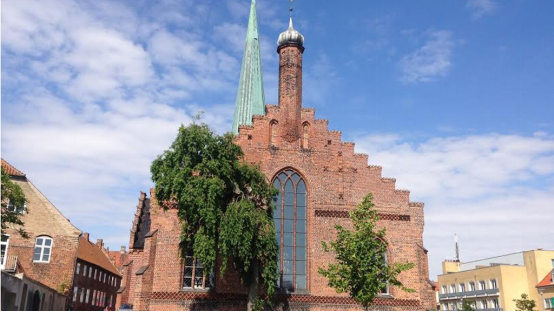
六、历史文化
Over the centuries, Nyborg has borne witness to some exceptional historical events. The old town centre is a large royal walled fortress from the Middle Ages, with the royal palace, Nyborg Castle, enthroned as the natural focal point. The entire municipality is heavily involved in the common project of getting the town of Nyborg and its castle on the list of UNESCO World Heritage sites.
The town, which has probably always been where the historic town centre lies today, grew up around the castle. The castle and the town were as one, surrounded by strong fortifications. Nordic mistress and ruler Today, Queen Margrethe II sits on the Danish throne. She is named after Queen Margrethe I (1376–1412), who brought together the three Scandinavian kingdoms in 1396, thus creating the largest European kingdom at that time, geographically speaking. Margrethe I was also the monarch behind the Nyborg we know today: During her reign, the castle was extended, the town was fortified and its large church was built. The church – and to a certain extent the rest of the town – were a monument to the victory over the Swedish king, which made it possible to form the union. The capital of Denmark At the end of the 15th century, the kings took up permanent residence at Nyborg Slot, and Nyborg and eastern Funen became the royal power base. The prime minister and the war minister lived in grand palaces nearby, and for a few years (1536–1560), Nyborg was Denmark’s first official capital.
Nyborg developed as a town when Nyborg Slot was built in around 1170. The castle is one of the most important cultural heritage monuments from medieval Denmark and one of the oldest preserved royal castles in Denmark. A royal power base Nyborg was strategically located to guard the Great Belt, which gave access to the Baltic Sea and what was the Danish Baltic Sea Empire.
Nyborg was first mentioned in 1193 in the history of Denmark as Nyborg Castle, which still exists today, but the town itself was not mentioned before the year 1202. The castle was extended by the Danish kings in the 13th century, making it a royal power base until the mid-16th century. The cradle of Danish democracy It was at Nyborg Slot that, for nearly two centuries, the king met with his parliament, Danehoffet, and it was here that the kingdom’s first constitution was signed in 1282. At Nyborg Slot, which is now open to the public as a museum, you can still step into the room where the Danish laws were adopted by the king and his parliament, and where the foundation of the Danish parliamentary system was laid.
In the 17th century, Nyborg was one of three major, fortified towns in Denmark, together with Fredericia and Copenhagen. Each was placed near an important body of water - in Nyborg's case, the Great Belt (Storebælt). In 1659 the city was captured by the Swedes and relieved by an expeditionary fleet sent by the Dutch, then Denmark's allies, commanded by admiral De Ruyter.
In 1867 the fortress was abolished and the town expanded beyond the ramparts. Much of the town's southern ramparts were destroyed in this process and converted into residential areas. The western and much of the northern ramparts still exist and form the scene of an annual theatre known as Nyborg Voldspil, which is Denmark's oldest outdoor theater.
From 1183 to 1413 it was the gathering place for Danehoffet, which was the country's legislative and judicial assembly. Nyborg is therefore considered Denmark's capital during this period. Christian II of Denmark was born at Nyborg Castle.
In 2005, plans about expanding Nyborg Harbour came to life and Nyborg Harbour, which previously connected Funen to Sealand with the old ferries (until 1996) now contains several large luxury-apartment buildings.
On January 1, 2007 Nyborg municipality was, as the result of Kommunalreformen ("The Municipal Reform" of 2007), merged with Ørbæk and Ullerslev municipalities to form a new Nyborg municipality.
In Nyborg Municipality there is a little less focus on culture and cultural life. As far as cultural expenditure is concerned, the municipality is just below the national average compared to other municipalities. The cultural expenses amount to DKK 476 per person. inhabitant. The national average is DKK 509.
As the highest completed education, 1,009 of citizens have a "Long Higher Education". 3,052 have a "Medium Higher Education" and 990 have a "Shorter Higher Education". 7,562 citizens have a "vocational education". 193 citizens have a "Batchelor" education and 105 citizens a "Researcher education". 961 has a high school education alone
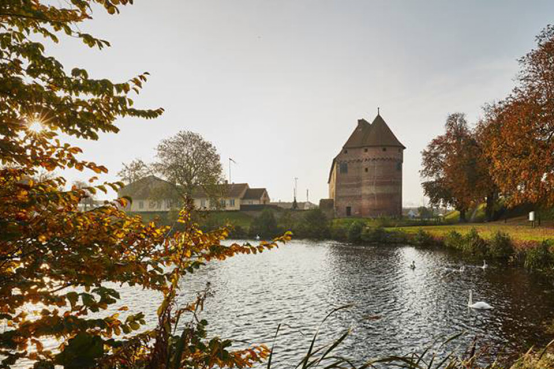
七、其他信息
The heart of the kingdom of Denmark - Nyborg as a world heritage site
The castle and town were for periods throughout the Middle Ages and until 1560 the king's preferred residence. Nyborg was perhaps the most central place of the kingdom - and not just geographically. This is where Parliament met, the so-called Danehof. Nyborg Castle can therefore be regarded as a medieval Christiansborg. The spaces that can still be visited today have formed the framework for far-reaching decisions for Denmark and the countries around us.
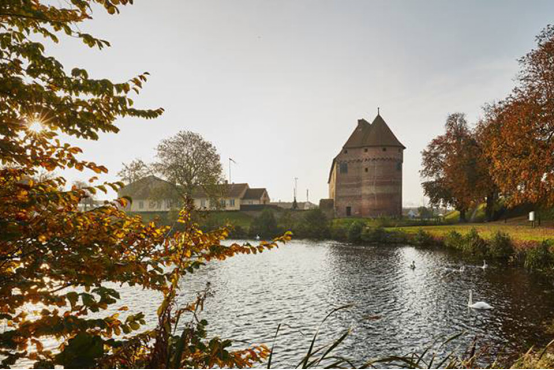
Nyborg was so important a city that several rulers spent considerable resources on planning, expanding and consolidating it. Kings were allowed to bury in Odense and thus Odense Cathedral and Nyborg stand in the same conditions as Roskilde Cathedral and Copenhagen do today. The large civil works and the royal mausoleum in Odense are an expression of a concentration of power on East Funen and thus consolidate Nyborg's role as a residential city - perhaps even the first capital of the kingdom.
The story of Nyborg castle and city is quite unique in the Danish and perhaps also European context. One can still clearly see the historical traces of the city and its hinterland and this cultural heritage holds great potential.
Therefore, Nyborg Municipality and East Funen Museums have a vision to develop Nyborg castle and city into a worthy candidate for UNESCO's World Heritage List.
八、联系方式
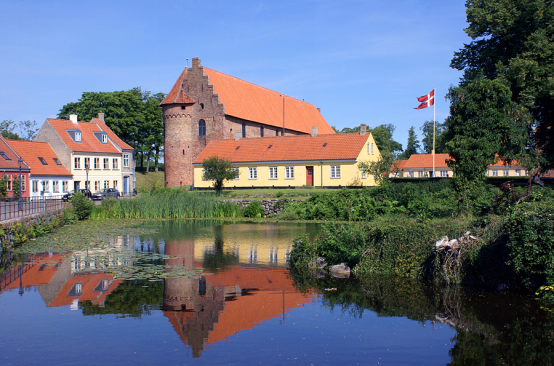
Mayor: Kenneth Muhs
Address: Torvet 1, 5800 Nyborg
Telephone: 6333 7000
mail: kommune@nyborg.dk
Facebook: https://www.facebook.com/nyborgkommune
Website: https://www.nyborg.dk/da
Office Hours:
Monday Tuesday 10:00 to 15:00
Wednesday Closed
Thursday 10.00 to 16.30
Friday 10:00 to 13:00
